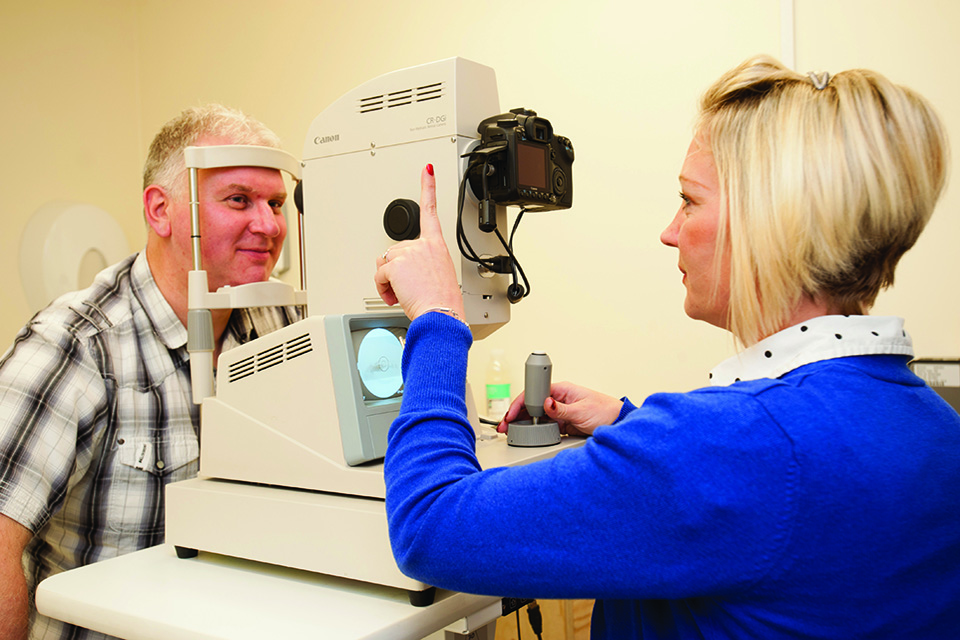Your guide to diabetic eye screening
Updated 9 October 2023
Diabetic eye screening is important as it helps to prevent sight loss. As someone with diabetes, your eyes are at risk of damage from diabetic retinopathy. Screening can detect the condition early before you notice any changes to your vision.
1. Diabetic retinopathy
This condition occurs when diabetes affects small blood vessels, damaging the part of the eye called the retina. It can cause the blood vessels in the retina to leak or become blocked. This can affect your sight.
2. Importance of screening

Diabetic eye screening using digital photography
Eye screening is an important part of your diabetes care. Untreated diabetic retinopathy is one of the most common causes of sight loss. When the condition is caught early, treatment is effective at reducing or preventing damage to your sight.
Diabetic eye screening is not covered as part of your normal eye examination with an optician. Screening does not look for other eye conditions and you should continue to visit your optician regularly for an eye examination as well.
3. The screening test

Eye drops being administered prior to screening test
-
We put drops in your eyes to temporarily make your pupils larger. You may find that the drops briefly sting.
-
We take photographs of the back of your eyes. The camera does not come into contact with your eyes. We send the photographs to an expert to review.
-
The appointment will last around 30 minutes.
-
We aim to send a letter to you and your GP within 3 weeks letting you know your screening results.
4. When screening is offered
We invite everyone with diabetes aged 12 and over for diabetic eye screening. How often you are invited for screening will depend on the results from your last 2 screening appointments.
If no diabetic retinopathy was detected, you will be invited for screening every 1 or 2 years.
5. Side effects
The eye drops may affect your vision for a few hours, so you should not drive after your appointment.
6. Possible results
A clinical expert reviews the photographs of your eyes after you have been screened.
If there are any problems or more questions, we may call you back for another assessment.
Screening can detect:
- early signs of retinopathy
- if you need a follow-up appointment to see whether you need treatment
- if you need to have more frequent checks
7. Practical hints and tips on the day
Bring all the glasses and contact lenses you wear along with lens solution for your contacts.
Bring sunglasses as your eyes can feel sensitive after having the eye drops.
You may want to bring someone with you to the appointment.
Eye drops may affect your vision for a few hours, so you should not drive after your appointment.
Remember: eye screening is just a part of managing your diabetes and diabetic retinopathy is treatable, especially if it is caught early.
8. How you can help
You can help to reduce your risk if you:
-
control your blood glucose as effectively as possible
-
see your doctor regularly to check your blood pressure is not raised
-
attend your diabetic eye screening appointments
-
get advice if you have a problem with your sight
-
take your medication as prescribed
-
exercise regularly, following medical advice
9. Confidentiality
The NHS screening programmes use personal information from your NHS records to invite you for screening at the right time. NHS England also uses your information to ensure you receive high quality care and to improve the screening programmes. Find out more about how your information is used and protected, and your options.
10. More information
See your screening invitation letter for details of what you need to do next.
You can read more about eye screening and diabetic retinopathy at NHS.UK and Diabetes UK.
Find out how to opt out of screening.
